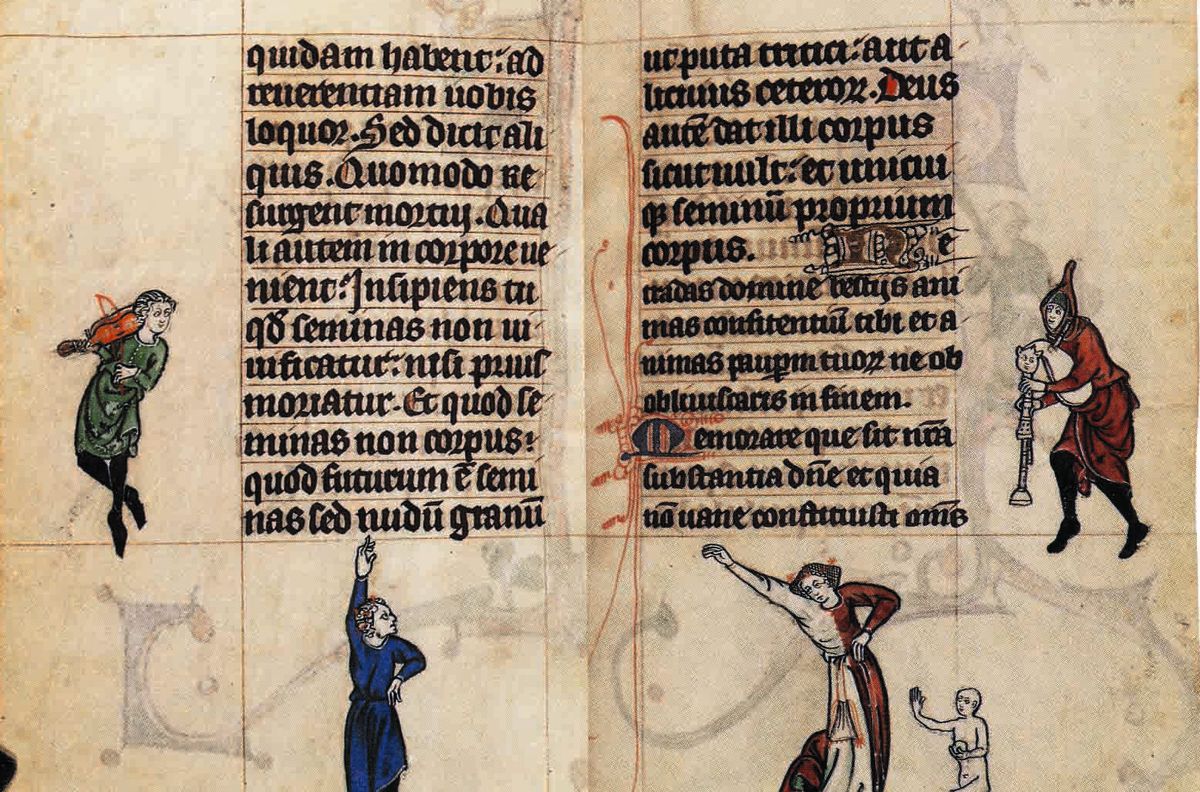On the margins of medieval manuscripts (and beneath misericords in church chancels) there is evidence that, in the all-encompassing Age of Faith, there was some dissent or perhaps more accurately fun-poking at the elders and betters of the day. Lascivious apes, pot-bellied monks, harp-playing asses, arse-kissing priests and somersaulting jongleurs abound, but have hitherto been mostly passed over or dismissed as mere decoration or mindless doodles. Here the illuminators focused their attention not on the serious and high-minded matters of the painted pages or initials, but on that lowest level of society, the laboratores who seldom got a look-in, compared to the upper-crust, oratores and pugnatores. Yet, as these two pages from the Maastricht Book of Hours (around 1300-25) shows, a gent or lady need not have been relentlessly serious, but could combine fun with prayer – in the margins we see two musicians providing dance music for a man and a woman throwing some shapes in the bas de page. The late Michael Camille has in this book helped us to see the overlooked and how even those somewhat higher up the social scale, the scribes and illuminators, exploited their marginality in the margins.
- Michael Camille, Image on the Edge: the Margins of Medieval Art, Reaktion Books, 208pp, £16.95 (hb)


